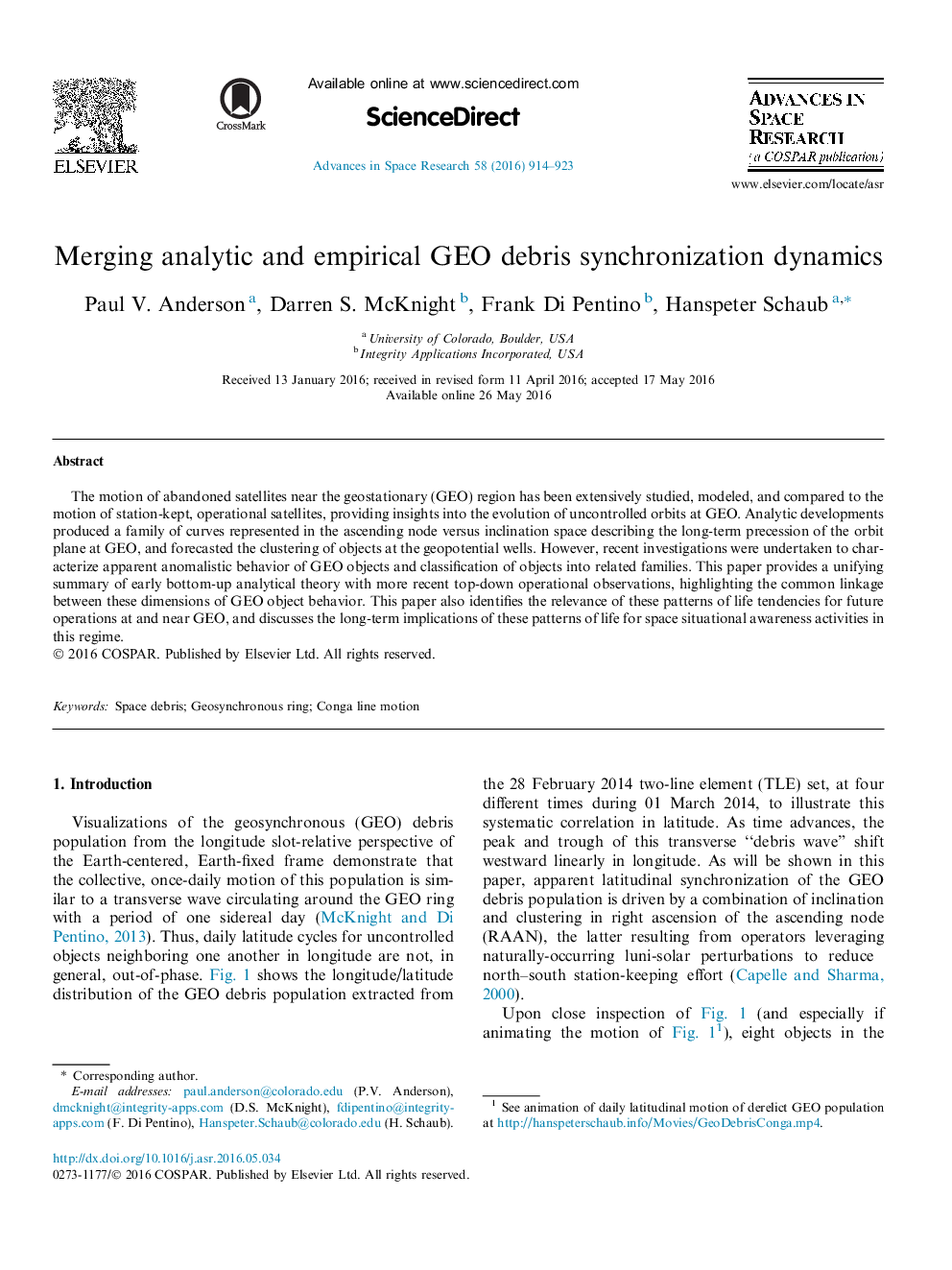| Article ID | Journal | Published Year | Pages | File Type |
|---|---|---|---|---|
| 1763209 | Advances in Space Research | 2016 | 10 Pages |
The motion of abandoned satellites near the geostationary (GEO) region has been extensively studied, modeled, and compared to the motion of station-kept, operational satellites, providing insights into the evolution of uncontrolled orbits at GEO. Analytic developments produced a family of curves represented in the ascending node versus inclination space describing the long-term precession of the orbit plane at GEO, and forecasted the clustering of objects at the geopotential wells. However, recent investigations were undertaken to characterize apparent anomalistic behavior of GEO objects and classification of objects into related families. This paper provides a unifying summary of early bottom-up analytical theory with more recent top-down operational observations, highlighting the common linkage between these dimensions of GEO object behavior. This paper also identifies the relevance of these patterns of life tendencies for future operations at and near GEO, and discusses the long-term implications of these patterns of life for space situational awareness activities in this regime.
